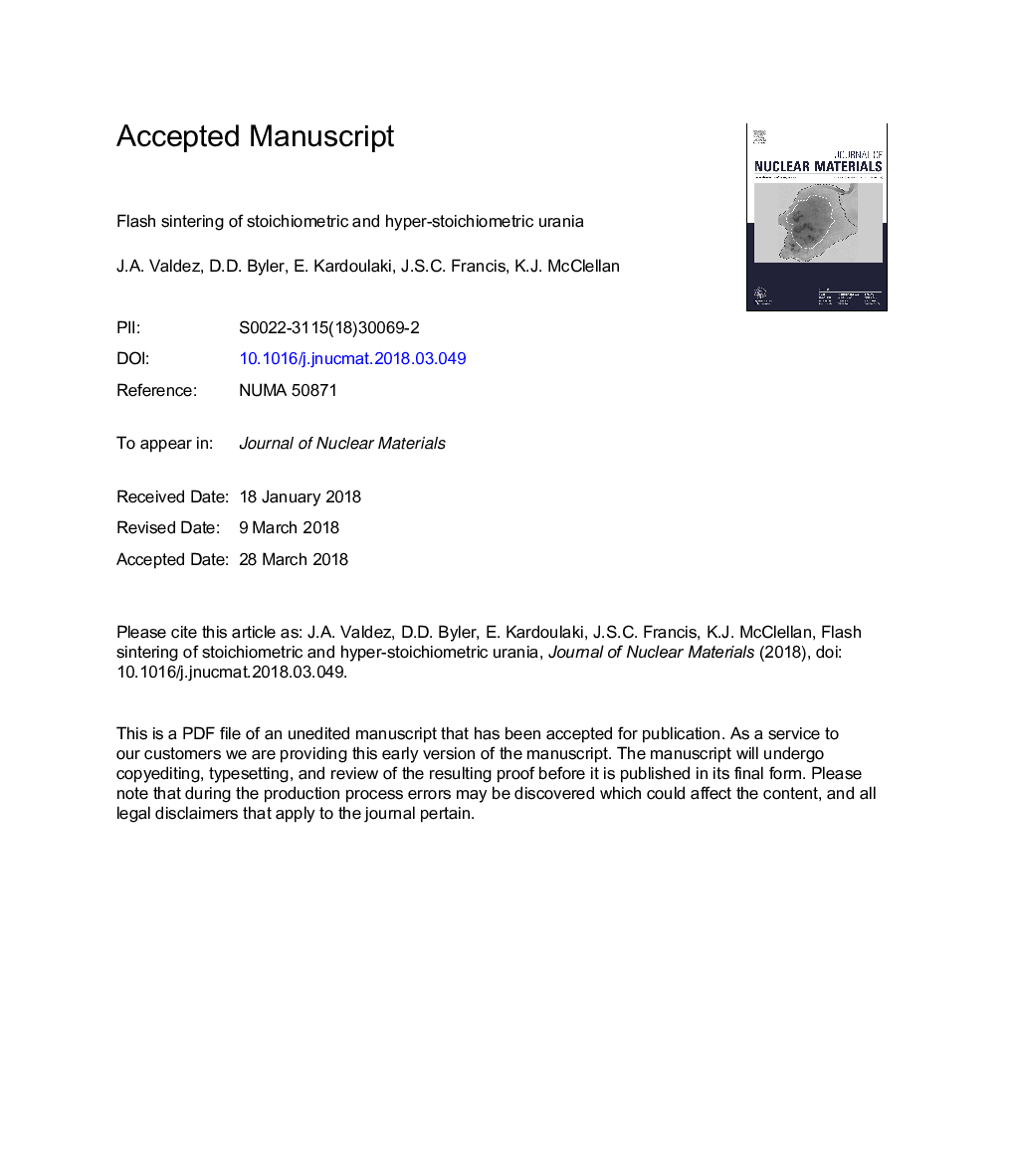| Article ID | Journal | Published Year | Pages | File Type |
|---|---|---|---|---|
| 7963178 | Journal of Nuclear Materials | 2018 | 30 Pages |
Abstract
Flash sintering (FS), a novel fabrication technique belonging to the family of field assisted sintering (FAS) techniques, has been utilized in this study to fabricate uranium dioxide (UO2) pellets. Stoichiometric (UO2.00) and hyper-stoichiometric (UO2.16) pellets were flash sintered at 600â¯Â°C within a few (2-3) minutes. This is in sharp contrast to conventional sintering where temperatures hundreds of degrees higher are necessary and the sintering time extends to hours. Relating this in terms of the homologous temperature ratio (TH) for both conditions shows that in the case of flash sintering at 600â¯Â°C, THâ¯=â¯0.3 versus THâ¯=â¯0.6 for conventional sintering at 1600â¯Â°C. The highest density achieved for a UO2.00 pellet was 81% theoretical density (TD) when flash sintered at 600â¯Â°C for 185â¯sâ¯at a field of 188â¯V/cm and a current density of 442â¯mA/mm2. For the UO2.16 pellet, the highest achieved density was 91% TD when flash sintered at 600â¯Â°C for 123â¯sâ¯at a field of 188â¯V/cm and a current density of 632â¯mA/mm2. X-ray diffraction (XRD) characterization of the sintered pellets showed the final sintered material to be single cubic fluorite phase. Scanning electron microscopy (SEM) of longitudinal sections revealed non-uniform microstructures with regions of high density where the grain size ranged from 1 to 15â¯Î¼m. Comparisons between conventionally and flash sintered pellets that achieved equivalent shrinkage strains were also conducted. In all cases, the flash sintered pellets achieved similar densification to the conventionally sintered pellets at much lower furnace temperatures and shorter times.
Related Topics
Physical Sciences and Engineering
Energy
Nuclear Energy and Engineering
Authors
J.A. Valdez, D.D. Byler, E. Kardoulaki, J.S.C. Francis, K.J. McClellan,
